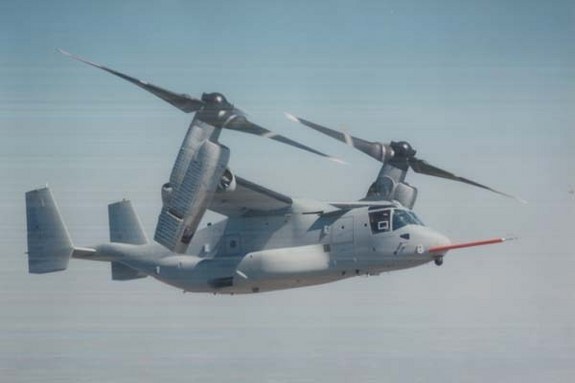
The V-22 Osprey has been a dream of aircraft designers for decades. The machine is a tilt-rotor aircraft that can take off and land similar to a helicopter yet fly like an airplane.
The program to build this aircraft began after a failed mission to rescue hostages in Iran during the 1980s. Military planners realized they needed something more agile in the air than conventional helicopters for such rescue missions. Aeronautical engineers created the V-22, an aircraft that could combine the speed and range of a turboprop airplane with the vertical agility of a helicopter. However, building this "dream machine" took about 25 years and much of it was marked by failures and controversy.
Development of the V-22 began in 1986 and partnered Bell Helicopter with Boeing Vertol to create an enlarged version of the Bell XV-15 prototype plane. While the first V-22 was ready for testing in 1988, the program went over its budget quickly. The development budget in 1986 was $2.5 billion but increased to $30 billion only two years later. Safety failures and allegations of falsifying safety records plagued the aircraft. During testing from 1991 to 2000, the aircraft crashed seven times killing 36 people.
In 2005, the Pentagon noted the aircraft was suitable for operational use. Since then, the V-22 has successfully completed several rescue missions in war zones. Today, 130 Ospreys are operational with the Marine Corps and the Air Force Special Operations Command.
Follow Life's Little Mysteries on Twitter @llmysteries. We're also on Facebook & Google+.
Get the world’s most fascinating discoveries delivered straight to your inbox.



